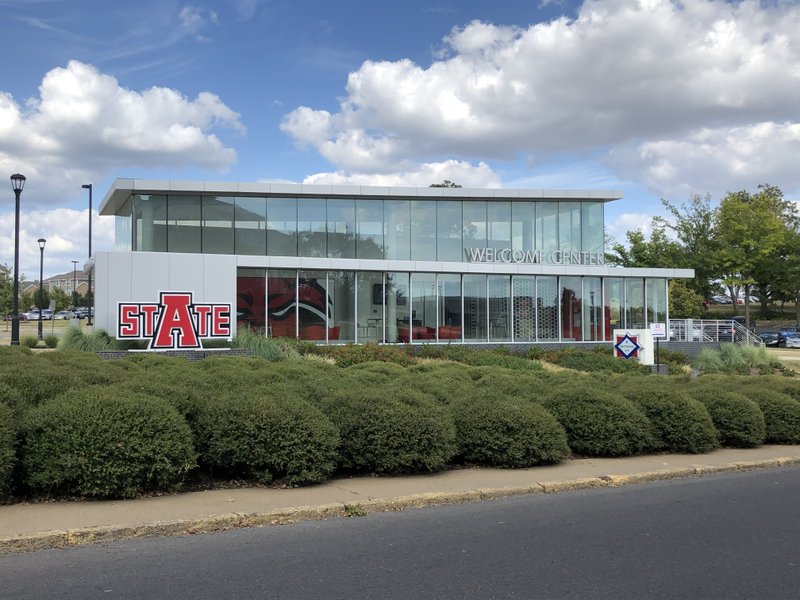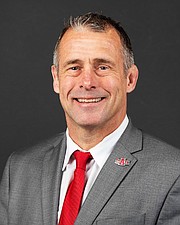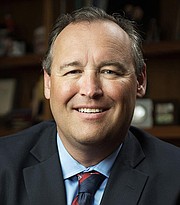Arkansas State University leaders have identified $1.5 million to cut from the school's budget, and are backing off plans to cut half-a-million dollars from academic affairs.
Lower-than-anticipated fall enrollment numbers suggest that the school could take in as much as $1.5 million less than budgeted by the end of this school year.
That prompted new Provost Alan Utter to send an email Oct. 8 to deans asking for help. The email said academic affairs was being asked to find $500,479 that was "anticipated to become a permanent cut."
Deans then went to department chairmen and broke down what departments would need to cut, proportional to their budget share. Suggested cuts were submitted to the provost.
[DOCUMENT: Resolution to limit administrative compensation » arkansasonline.com/117asu/]
It is the second time in three years that the university expects a budget shortfall. This year's expected gap is much smaller than two years ago, when it was $3.8 million.
ASU isn't unique among universities in Arkansas or across the nation in anticipating budget shortfalls because of enrollment projections that were too high. Most of Arkansas' public universities have fewer students this year, and a few have far fewer than anticipated, leading to potentially millions in budget cuts.
ASU did not anticipate having more than 200 fewer first-year students, according to a statement that Len Frey, executive vice chancellor for finance and administration, sent the Arkansas Democrat-Gazette on Wednesday.
Tension over the proposed cuts at ASU eased a bit Friday, but some faculty members remain concerned that financial worries are not over.
[DOCUMENT: Resolution to return administrative raises » arkansasonline.com/117raises/]
On Friday, ASU Chancellor Kelly Damphousse sent an email to campus leaders, including faculty leaders, informing them that he'd found sufficient cuts without taking any money from the academic affairs budget. Those cuts will be "minimally impactful" to the campus, the email said.
"I am grateful for those other divisions and offices that will continue to do more with less so that the impact of the projected deficit does not limit our fundamental mission in Academic Affairs or the vital role of our Admissions Office," Damphousse wrote.
That same day, the faculty senate approved two resolutions on limiting top administrative salaries and using top administrative compensation increases to make up for the expected budget shortfall this school year.
"This administration requested and received raises for administrators out of proportion with the reality of our current financial circumstances," reads the resolution asking for limited administrative salaries. It continues, "the Faculty Senate requests as part of the strategic planning process that Chancellor Damphousse implement a budgeting process consisting of revenue and expenses commensurate with reasonable expectations for enrollment."
[DOCUMENT: Oct. 15 email from ASU Chancellor Kelly Damphousse » arkansasonline.com/117email/]
A portion of the other resolution reads, "the normalization of a budget in constant crisis primarily demoralizes those who serve in revenue generating units and departments, namely faculty and staff."
In a statement sent to the newspaper Wednesday, Damphousse said he is "happy to respond to the Faculty Senate" when he receives resolutions from them.
"We have proactively addressed very small budget reallocations for FY20 with no impact on any colleges or academic departments," the statement reads.
Utter's email in early October has some faculty members wondering if cuts could still be coming, but the university isn't looking at cutting from academics, university spokesman Bill Smith said. It's focused on keeping academics in shape and improving enrollment management, including student retention.
[DOCUMENT: Nov. 1 email from ASU Chancellor Kelly Damphousse » arkansasonline.com/117chancellor/]
Smith said ASU is making up for the deficit by deferring capital projects, using carry-forward funds from the provost's and finance and administration offices, and not hiring a vice chancellor for university advancement -- who would be the school's chief fundraiser. The capital projects total $750,000 in savings, and the others total $702,000 in savings. The remaining $48,000 in cuts came from other departments, including student affairs and athletics.
Faculty members can express dissatisfaction with what private donations pay for, such as deferred compensation or athletics facilities, but that money, when it's donated, isn't intended for anything else, Smith said.
At ASU, the enrollment contraction at its home campus in Jonesboro has been masked in part by increasing enrollment in its online degree programs and at its campus in Queretaro, Mexico. Together, online-only and Campus Queretaro students make up about a third of the university's enrollment.
The university counted 13,891 students this fall. That's down 1.2% from the fall of 2018, when it had 14,058 students. Of this fall's enrollment, reported on the 11th day of classes, 4,113 students were online-only and 535 were studying at Campus Queretaro.
Most of Arkansas' public universities have online degree programs, but ASU has the highest enrollment of online-only students, leaders say.
Conversations about the enrollment struggles at ASU can at times drift toward dissatisfaction over administrative pay and athletic department expenses during a time when some say the university needs to budget conservatively.
That's a common refrain at universities across the country that are facing tight budgets and uncertain enrollments. Earlier this fall, a complaint from a faculty member at Louisiana State University about the school's "decrepit" library and new $28 million football facility set off a national debate. While the facility was funded by the Tiger Athletic Foundation, the university's state funding is half what it was a decade ago, and the school nearly filed for financial exigency back in 2015, the Chronicle of Higher Education reported.
Damphousse received a $12,000 pay raise this year to $372,000 and has received increasing deferred compensation of tens of thousands of dollars from the ASU Foundation since arriving in July 2017. His total compensation exceeds $500,000. It was $465,000 when he started.
Universities' contributions to their athletics programs, under Ark. Code Ann. 6-62-803, are limited to 2% of unrestricted educational and general funds. That would be about $3.4 million of the $172.2 million budgeted for this year.
"During a time when enrollment is falling and the forecast is not looking bright for increased enrollments, it just seems like a really distorted and perverted narrative to me," said Hans Hacker, an associate professor of political science and a faculty senator who introduced the resolutions in the faculty senate Friday.
The university, Hacker noted, touted recent billings by U.S. News and World Report, which ranked ASU first for undergraduate teaching and first for social mobility for low-income students.
Given the ratings, he questioned why academics would be targeted for cuts. Graduation rates are also rising, he said.
"That suggests that faculty are doing their job, and they are moving students along to degree completion," he said.
Faculty members received 3% merit raises this fall. They were among other cost increases that were funded by raises in tuition and fees earlier this year.
William McLean, chairman of the political science department, said he was asked to find $110,000 to cut. He came up with cuts from supplies, services and travel. Also, he proposed turning in revenue from the department's profit-generating operations, such as its print shop. They could cut from educational and general funds but not from salaries, he said.
He said he didn't know what happened with the proposal and didn't know who else was asked to find things to cut from their budgets.
He's seen budget cuts before, but said "you try to hold the line."
"In lean times you try to deliver the core mission of the university," he said. "When there's not a lot of money, it's hard to make cuts where there's already a lean budget."
In his statement, Frey, the executive vice chancellor for finance and administration, emphasized operating within means.
"The colleges and universities that have experienced the greatest financial distress across the country are not doing that and are spending out of reserves for annual operating expenses," the statement reads. "We need to be proactive both within the fiscal year and looking ahead."
A Section on 11/07/2019


